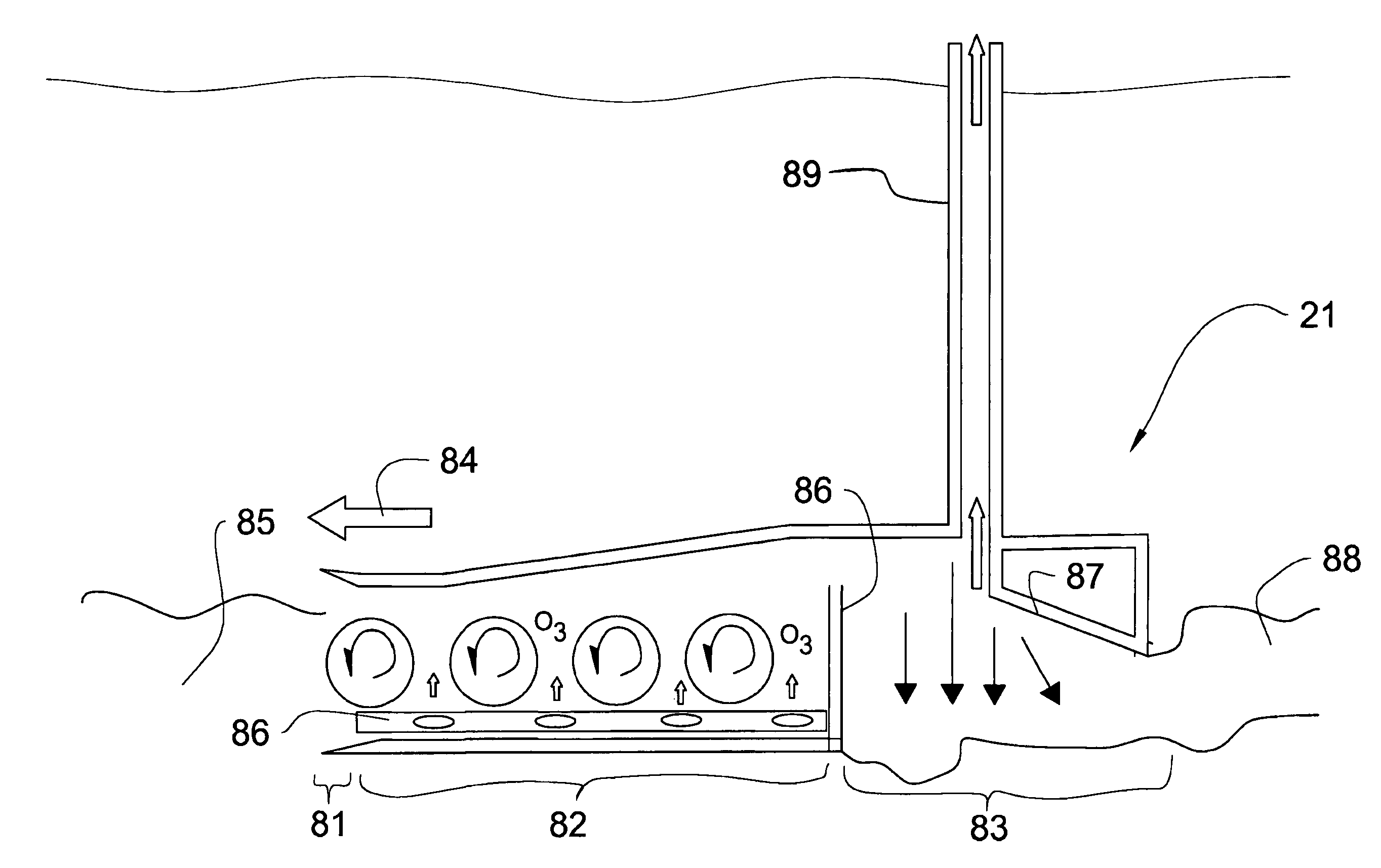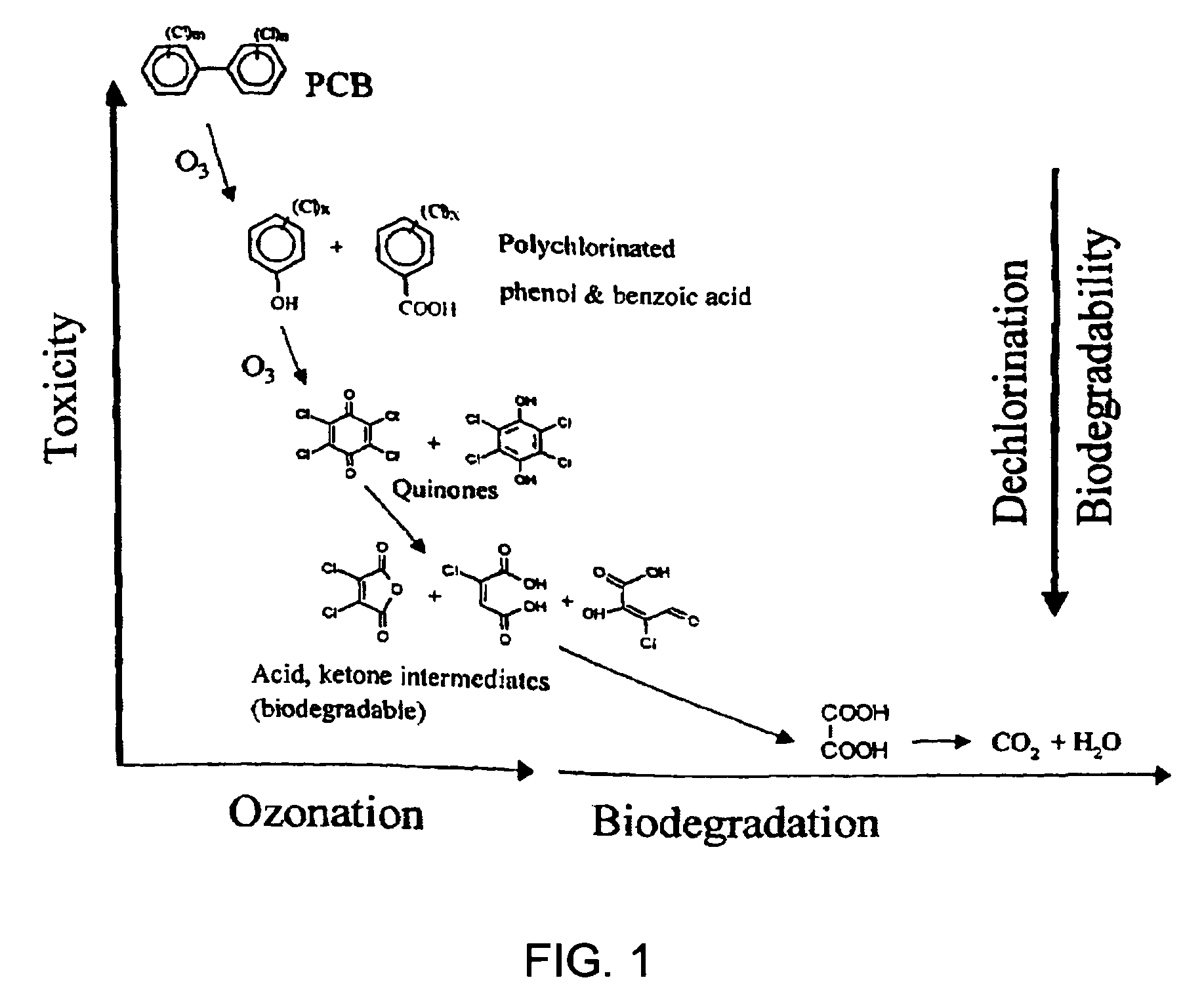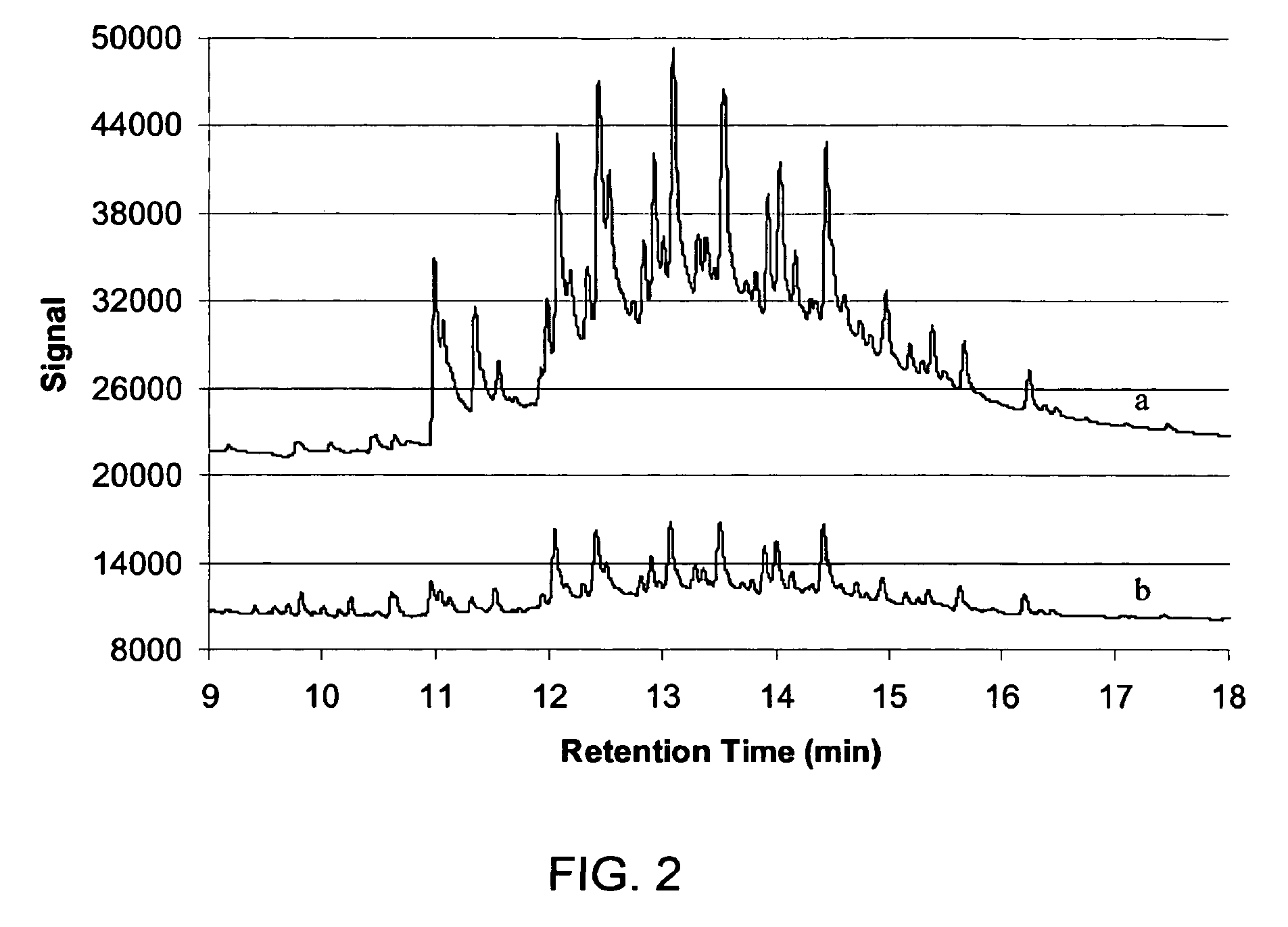Remediation with ozone of sediments containing organic contaminants
a technology of organic contaminants and sediments, applied in the field of underwater sediment remediation, can solve the problems of increasing the reactiveness of remaining products, increasing the risk of biodegradation, and reducing the ozone content of sediments, so as to promote the onset of biodegradation of products and improve the biodegradation conditions
- Summary
- Abstract
- Description
- Claims
- Application Information
AI Technical Summary
Benefits of technology
Problems solved by technology
Method used
Image
Examples
example — pcb
Example—PCB Reaction With Ozone
[0030] One of the problems in the prior-art is that degradation of PCBs, which generally involved biodegradation systems, is too slow to be practical and applicable to an economical technique. The present invention involves a chemical reaction of PCBs to produce products that are less harmful and more amenable to biodegradation. Accordingly, the following example demonstrates that reaction of PCBs with ozone is not only possible, but represents a viable and economical technique for the treatment of PCB laden sediments.
[0031] This particular example shows that PCB in an aqueous environment undergoes degradation when exposed to ozone. Vigorous mixing enhanced the contacting of the PCB and ozone. The vigorous mixing in the examples was provided by ultrasound irradiation, but other methods of mixing are also applicable.
Methods
[0032] Chemicals
[0033] Ozone (˜1% w / w ozone in air) was generated from filtered, dry air by an ozonator (Model T-816, Polymetri...
PUM
| Property | Measurement | Unit |
|---|---|---|
| temperature | aaaaa | aaaaa |
| temperatures | aaaaa | aaaaa |
| temperatures | aaaaa | aaaaa |
Abstract
Description
Claims
Application Information
 Login to View More
Login to View More - R&D
- Intellectual Property
- Life Sciences
- Materials
- Tech Scout
- Unparalleled Data Quality
- Higher Quality Content
- 60% Fewer Hallucinations
Browse by: Latest US Patents, China's latest patents, Technical Efficacy Thesaurus, Application Domain, Technology Topic, Popular Technical Reports.
© 2025 PatSnap. All rights reserved.Legal|Privacy policy|Modern Slavery Act Transparency Statement|Sitemap|About US| Contact US: help@patsnap.com



